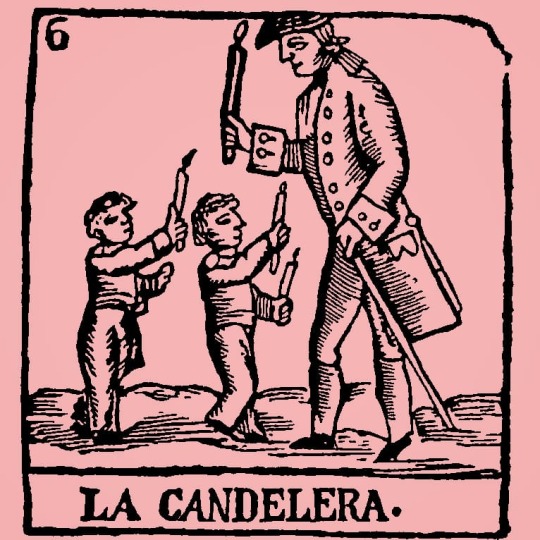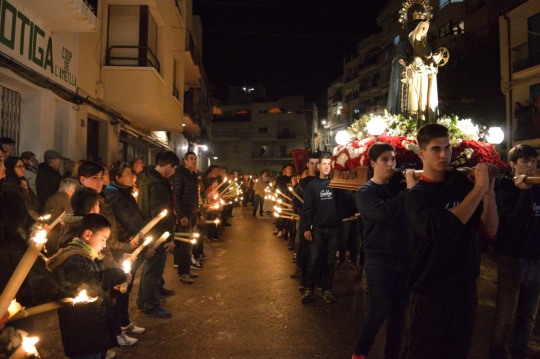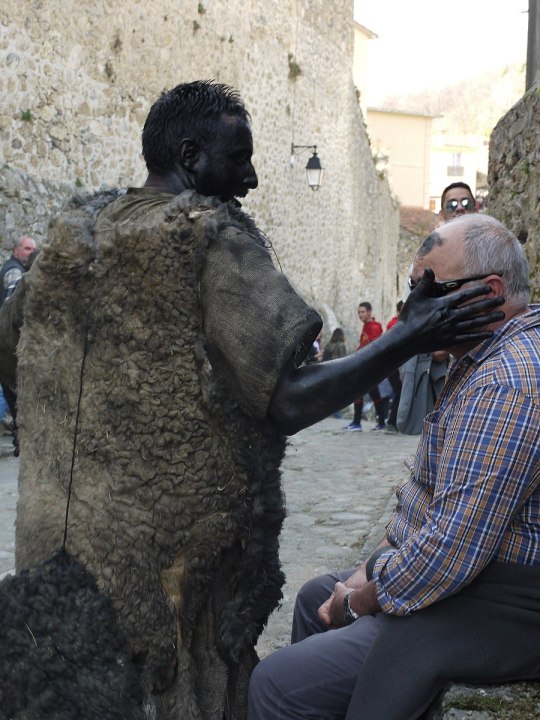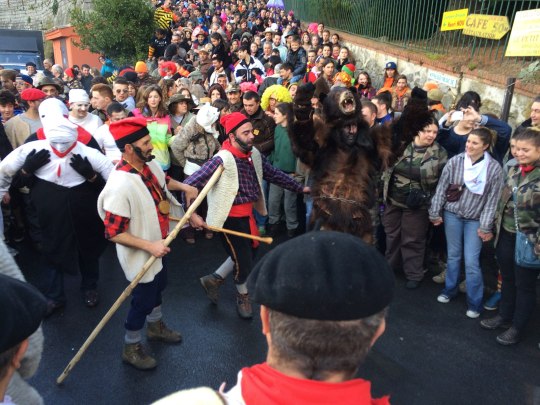#festes de l'os
Text

The 2nd of February is the Christian festivity called Candlemas (Candelera in Catalan). It's the date that ends the Christmas cycle, where traditionally people would put away the Nativity scene, though nowadays lots of people take it down soon after Three Wise Men Day (6th of January).
What does this day celebrate?
Candlemas is most likely a remnant of the Ancient Roman festival of Parentalia (last day of the Feralia), celebrated annually in February to remember the dead. During Parentalia, they did processions where they dressed in black and carried little blessed candles to the cemeteries to guide the dead people's souls.
Some say that the origins of Candlemas might also be related to another Ancient Roman festival celebrated in February: the Lupercalia, in honour of the god of fertility and shepherds Lupercus.
In the Christian tradition, this festivity celebrates when Mary brought Jesus to the temple. Biblical scholars explain that it was a tradition for Jewish women to bring their child to the temple 40 days after giving birth. Then, the child was presented to the priests and they were blessed in front of candles, and the woman was purified. Since the Christian tradition says Jesus was born on the 25th of December, 40 days after his birth is the 2nd of February. Candlemas is celebrated every year on this day to commemorate Mary introducing Jesus to the temple. The festivity was introduced officially by Pope Gelasius I in the year 496.
How is Candlemas celebrated?
Believers take candles to be blessed, and some places hold processions with lit candles. The candles are taken home to be kept, because they're believed to have protection powers.

Candlemas procession in L'Ametlla de Mar (Terres de l'Ebre, Catalonia), who celebrates their festa major on this day. Photo: IPCITE.
Unlike other festivals of the Christian calendar (like local patron saint days, Christmas, Three Wise Men Day, Saint Anthony/Three Laps, Saint George, Midsummer/Saint John, Corpus, etc) which are celebrated by everyone in our country, Christian and non-Christian alike; Candlemas is not so widely celebrated by people who aren't Christian believers. But even then, there is one thing that everyone knows Candlemas for: predicting the weather.
In Catalan we have the saying: "Si la Candelera plora, l'hivern és fora. Si la Candelera riu, el fred és viu." which means "If Candlemas cries, the winter is out. If Candlemas laughs, the cold is alive". This sums it up, if it rains on February 2nd it's believed to be a sign that winter is ending. If it's sunny, winter will still go on.
Candlemas is also the day that people in the USA and Canada hold "Groundhog Day", where a groundhog (a rodent animal) is said to predict the same.
Some mountain parts of Europe also remember this date as the day where bears wake up from their hibernation, and many of these places have some festivity about it. In Northern Catalonia, we have the Bear Festivity (Festa de l'Os). In this ancient festivity, which is still done nowadays, some people from the town dress up as bears, while others get all dirty and accompany him running through the town, shouting, whistling and playing music. Others dress up as hunters and run after them. It represents nature waking up from the winter rest, but also the danger that comes with it.


Festa de l'Os in Prats de Molló (Northern Catalonia). Vilaweb and Fabricio Cardenas.

Festa de l'Os in Sant Llorenç de Cerdans (Northern Catalonia). Photographer: Marc Velasco.
The festivity ends when the hunters bring the bear to the town centre and take off his bear skin, turning him into a human. This represents the victory of humans over nature, but scholars also point that it could come from an ancient myth from the Pyrenees according to which humans evolved from bears (for reference, we don't have apes nor monkeys in this part of the world).
#candelera#la candelera#tradicions#candlemas#holidays#cultures#religion#religions#christian#history#festes de l'os#festa de l'os#bear#catalunya nord#sant llorenç de cerdans#prats de molló#ametlla de mar#l'ametlla de mar#feast of the presentation of jesus christ
46 notes
·
View notes